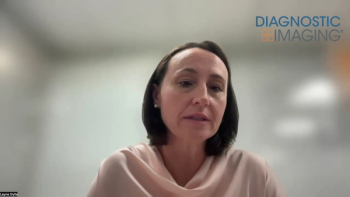
High Deductible Plans, Less Diagnostic Imaging
Patients with high deductible health plans aren’t getting the imaging they need.
Patients who have insurance plans with high deductibles tend to undergo fewer imaging tests than patients without plans, according to a study published online in
Researchers from the Boston University Questrom School of Business, the School of Public Health and Health Sciences at University of Massachusetts Amherst, and Massachusetts
Institute of Technology (MIT) Sloan School of Management in Cambridge, sought to evaluate and quantify associations between enrollment in high deductible health plans (HDHP) enrollment and the use of diagnostic imaging, such as MRI, X-rays, and CT scans, nationally in all health care settings.
Using commercial insurance claims data of over 21 million individuals from 2010, the researchers made comparisons between use of diagnostic imaging tests and standardized payments between patients in HDHPs and non-HDHPs. To be considered a high deductible plan, the annual deductible had to be at least $1,200 for individuals and $2,400 for families.
The results showed that enrollment in HDHPs was associated with a 7.5% decrease in the number of imaging studies for patients, and a 10.2% decrease in standardized imaging payments. Those patients in HDHPs were 1.7% less likely to undergo imaging, although the difference was small once a patient underwent at least one imaging study.[[{"type":"media","view_mode":"media_crop","fid":"45011","attributes":{"alt":"Kimberley Geissler, PhD","class":"media-image media-image-right","id":"media_crop_141545019506","media_crop_h":"0","media_crop_image_style":"-1","media_crop_instance":"5080","media_crop_rotate":"0","media_crop_scale_h":"0","media_crop_scale_w":"0","media_crop_w":"0","media_crop_x":"0","media_crop_y":"0","style":"height: 215px; width: 170px; border-width: 0px; border-style: solid; margin: 1px; float: right;","title":"Kimberley Geissler, PhD","typeof":"foaf:Image"}}]]
"I think what we found most surprising is the large reductions in imaging use among people with high deductibles,” senior author Kimberley Geissler, PhD, assistant professor of health policy and management at the School of Public Health and Health Sciences at UMass Amherst, said in a release. “We had hoped to find that patients were reducing use of low-value imaging, but we found they reduced all use similarly. It seems patients are not informed enough to discern which tests are more optional and which are medically necessary."
The researchers concluded that plans with high deductibles may actually be barriers, reducing access to some diagnostic imaging, including high-value imaging compared with low-value tests. “Better patient awareness and education may be a crucial part of any reductions in diagnostic imaging utilization,” they wrote.
Newsletter
Stay at the forefront of radiology with the Diagnostic Imaging newsletter, delivering the latest news, clinical insights, and imaging advancements for today’s radiologists.



























